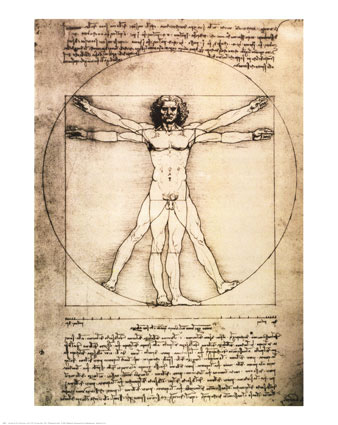Mathematics Education (Signadou)
Cracking the "Real" da Vinci Code:
Mathematics and Beauty
'Actually... PHI is generally considered the most beautiful number in the universe.'
...As Langdon loaded his slide projector, he explained that the number PHI was derived from the Fibonacci sequence - a progression famous not only because the sum of adjacent terms equalled the next term, but because the quotients of adjacent terms possessed the astonishing property of approaching the number 1.618 - PHI!
Despite PHI's seemingly mysical mathematical origins, Langdon explained, the truly mind-boggling aspect of PHI was its role as a fundamental building block in nature. Plants, animals and even human beings all possessed dimensional properties that adhered with eerie exactitude to the ratio of PHI to 1.'PHI's ubiquity in nature,' Langdon said, killing the lights, 'clearly exceeds coincidence, and so the ancients assumed the number PHI must have been preordained by the Creator of the universe. Early scientists heralded one-point-six-one-eight as the Divine Proportion.'
'...Measure the distance from the tip of your head to the floor. Then divide that by the distance from your belly button to the floor. Guess what number you get.'
'...Measure the distance from your shoulder to your fingertips, and then divide it by the distance from your elbow to your fingertips...Another? Hip to floor divided by knee to floor... Finger joints. Toes. Spinal divisions... My friends, each of you is a walking tribute to the Divine Proportion.'
'...if you draw a pentagram, the lines automatically divide themselves into segments according to the Divine Proportion.'
'...Yes, the line segments in a pentacle all equal PHI, making this symbol the ultimate expression of the Divine Proportion. For this reason, the five-pointed star has always been the symbol for beauty and perfection associated with the goddess and the sacred feminine.'
[From The Da Vinci Code, pp 130-135]

Room 206 Phone 02 62091142



 Stephen Mark
ARNOLD
Stephen Mark
ARNOLD